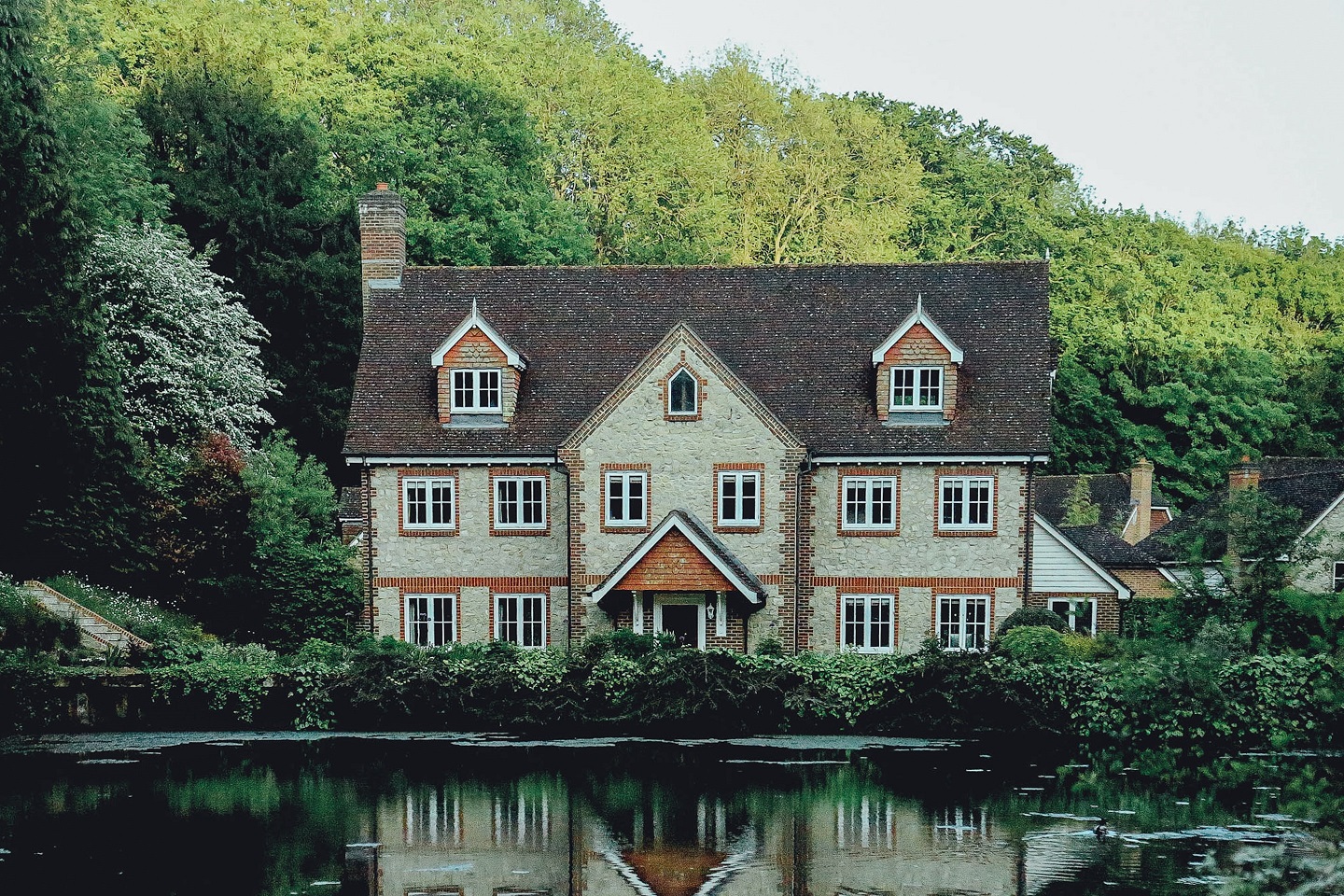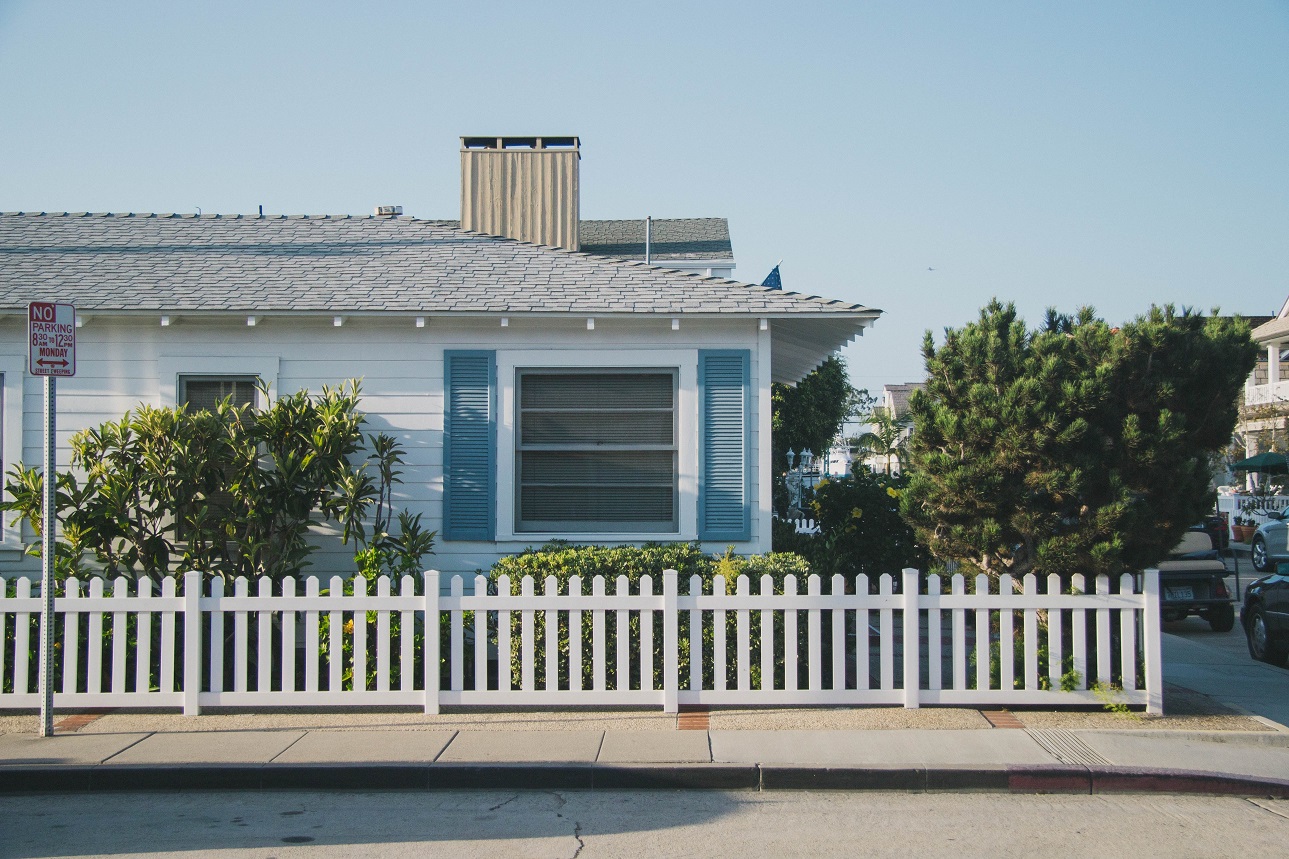One option to generate a guaranteed income stream for your remaining years
After thirty-plus years you finally own your home! Champagne all around! (Or perhaps prune juice with rum?)
But the downside is that you have no pension and social security doesn’t cover squat. Perhaps you have some savings, but unless you conveniently die of a coronary in the next few years, it won’t last.
One option is to get a reverse mortgage on your existing home.
In simple terms, the bank pays YOU, which you can then use to pay your living expenses. At the end of the “term”—usually your death, you are obligated to pay it back. But you don’t have to. You’re dead, after all.
First, start with who should NOT get a reverse mortgage. If you want your home to go to your loved ones after you die, you should not get a reverse mortgage.
Likewise, if there are other (non-owners) living in the home, perhaps adult children (or your much-younger boyfriend), and you want them to stay in the home after you’re gone.
Spouses get to stay in the home. But if you married *after* starting your reverse mortgage, your spouse might have to move out.
So yes, after your death you may likely lose your house to the bank.
Your heirs have the option of paying off the loan if they wish to keep the house. But they don’t have to.
Note, the house is the only thing at risk. The bank can’t touch the rest of your estate or go after the other assets of your heirs. (Like your regular mortgage, it’s an example of a non-recourse loan.)
The question is, do you care if you lose your home? You don’t exactly need it anymore.
Reverse mortgage payment options
Still interested? Yes, reverse-mortgages have received their share of negative press. Like any strategy, there are good ways to implement it and ways where things can go very very badly…
Much of that depends on how you choose to receive the money from the lending company. Here are your options
Line of credit. Use it or not. What’s nice is that the unused balance grows over time. Not interest, per se, but a consideration that your house is probably appreciating in value. If you never use the line of credit, the only cost was the fees. Your house is still yours.
Term payment. Fixed monthly payments for a specific amount of time. Perhaps you are delaying social security or are expecting your own inheritance or the sale of a business. You may specify a term, perhaps to age 70, when payments stop.
Tenure payment. Fixed monthly payments for as long as you live. The payment doesn’t change, even if your house depreciates, and even if you “outlive” the value of the mortgage.
Modified term / Line of credit. You get the term payment, plus a line of credit
Modified tenure / Line of credit. Best of both worlds, a fixed monthly payment (albeit a bit less than the tenure payment option above), plus a line of credit for emergencies.
Lump sum. One big fat payment.
For purchase. Use the reverse mortgage, plus your other assets, to purchase a new, smaller home. The new home is purchased outright, with no mortgage payments due from you.
Note that all this income is tax-free.

Photo by Evelyn Paris on Unsplash
Most personal finance experts agree that the Lump Sum option is not a good idea. Unless it is being used to pay off your existing mortgage, receiving a big pile of money isn’t wise. Many of us won’t carefully budget it for future needs. Instead, we’re much more likely to blow it all.
And even if we are wise about budgeting, it can still run out before we do. In contrast, the tenure payment goes on for as long as we live, even if the loan exceeds the value of our home.
And if you’re thinking of being clever and investing it, think again. Unless you’re investing in Treasuries, you will be taking on risk. Instead, consider choosing the line of credit.
A reverse mortgage reduces the risk of running out of money
Salter J, et. al (2012) did a study of “standby reverse mortgages”, or the line of credit above.
Given a fixed amount of invested savings, depending on market conditions and our spending patterns, we are all at risk of running out of money. Would the availability of the line of credit help prevent this, and improve our investment savings “survival rate”?
The authors evaluated real-world savings withdrawal rates of 4%, 5%, and 6% using Monte Carlo analysis, which simulated thousands of (inflation-adjusted) market and interest-rate scenarios for the invested savings.
Note that 4% or less, is the standard withdrawal rate recommended to keep from running out of money. (These same authors conducted many of those studies.) More recently, with our low interest rates, that recommendation has been dropped to 3%.
Can the addition of a reverse mortgage allow the withdrawal rate to be increased upward, perhaps to 5% or even 6%?
The authors modeled $500,000 in savings with $250,000 in home equity. Based on borrowing limitations (explained below), the $250,000 home generated an $82,500 line of credit. Obviously, individual situations will vary.
In their model, they had three “buckets” of money:
- Savings invested in a 60/40 portfolio
- Cash for living expenses, equal to ~20% of total invested savings
- Line of credit from a reverse mortgage
Under normal market conditions, invested savings would be cashed out on a regular basis to keep the cash bucket full. Likewise, the invested savings of sixty percent stocks and forty percent bonds would be rebalanced as needed.
If it was a bad year for the market (as generated by the Monte Carlo simulation), instead of cashing out invested savings at a loss, the cash bucket would be first depleted, and then the credit line would be tapped.
After the bad year had passed, the cash bucket was refilled, and the credit line would be paid back (assuming any savings were left).
Once invested savings were depleted, the line of credit was used exclusively.
They found a significant savings survival rate with the addition of the reverse mortgage. In other words, the probability that you’ll make it to the end without going broke.
After 40 years at a 5% withdrawal rate, there was a > 70% success rate, vs < 40% success rate without the reverse mortgage.
The reverse mortgage strategy also significantly added to the success using both 4% and 6% withdrawal strategies.

Do a reverse mortgage now or later?
Pfeiffer S., et.al. (2014) added to the study above to determine when is the best time to secure a reverse mortgage to supplement your current retirement savings.
You can either secure a line of credit at the earliest opportunity, at age 62 or wait until decades later and your savings start to get dangerously low. Most of us do the latter.
As in the study above, the same fictitious retiree was modeled with withdrawal rates over their retirement of 4%, 5%, and 6%. For the early line-of-credit option, the three-bucket strategy was used as above. Monte Carlo simulations were used to reflect varying market conditions.
Different interest rate scenarios were also included. The reverse mortgage line-of-credit could be secured early in retirement, in our current low-interest-rate environment (“now-low”), or if our retiree waited until their funds became low, interest rates may still be low (“late-low”), moderate (“late-mid”), or much higher than they are today (“late-high”).
Regardless of the withdrawal rate, 4%, 5% or 6%, the early strategy had the best survival rate over thirty years, compared to starting late. The higher the interest rate later, the worse the outcome.
In the early strategy, portfolio survival over thirty years was 99.5% survival at a 4% withdrawal rate, 91.4% survival at 5% withdrawal, and 67% survival at 6% withdrawal
Even if our retiree’s home appreciates (2% in the model), the early reverse mortgage option still consistently did better than the late options.
The authors did note that the advantage of the early strategy only becomes evident after fifteen years. Before that, there is little difference between the outcomes of the strategies.
In other words, if you plan to move within fifteen years, you may not want to bother with an early reverse mortgage line-of-credit.
Reverse mortgages between spouses and other co-borrowers
If the home is owned by two people, such as a married couple, most reverse mortgages are taken out in the name of both. If one were to die, the remaining co-borrower simply continues with the loan.
Sometimes there may be a case where only one spouse has a reverse mortgage (and the title to the house). Perhaps the second spouse was too young to qualify.
No worries, the surviving spouse is not going to be evicted as long as they lived in the property for the duration of the loan and can either take possession of the title or have a legal right to remain in the house for life.
However, if there’s a second person (or persons) in the home, that is not on the loan and not a spouse, then they’ll need to pay back the loan if the borrower dies or moves out.

Photo by Gustavo Zambelli on Unsplash
Downsides of a reverse mortgage
Once you have a reverse mortgage you are required to stay current on your property taxes, homeowners insurance, and if applicable, condo fees. Likewise, you are responsible for maintaining the upkeep of your home.
You are also required to live there, at least for most of the year. If you want to switch and take up permanent residency in your vacation home or one of your rental properties, too bad. You’ll need to pay the loan off first.
There are several events—termed maturity events—that trigger the end of the loan, and require payment in full:
1. All borrowers have passed away
2. All borrowers have sold or transferred title of the property to a third party
3. The property is no longer the borrowers’ principal residence
4. The borrower lives elsewhere for a period exceeding 12 months because of physical or mental illness.
5. The borrower fails to pay property taxes and/or insurance despite all attempts to rectify the situation
6. The property is in disrepair and the borrower has refused or is unable to repair the property
The first and second events above are straightforward. If you die or sell the home, the loan comes due.
For events three and four, if at least one borrower remains at home, the loan continues. For example, if one spouse moves out or spends most of their time at the aforementioned vacation home, then the loan is fine as long as at least one borrower remains at home.
For health reasons, you may be forced to move in with family members, an assisted living facility or a nursing home. If you’re there for more than a year (and you don’t have a co-borrower continuing to live at home) the loan comes due. This may not be an issue, as you probably have no more use for your home at this stage of your life.
TIP: It’s a good idea to use some of the proceeds from your reverse mortgage to pay for long-term care insurance. If you do wind up in a nursing home for more than a year, and then are “cut-off” from your loan, you still have a way to pay for your current accommodations.
If you are moving, you may need moving expenses. Keep in mind the equity in your home is most likely depleted by this point and won’t be much help.
As mentioned previously, if there are other non-spouse non-borrowers in the home, perhaps your adult children and/or grandkids, their home is at risk if you die or move out.
Family members may have even moved in with you, specifically to take care of you (and keep up with the maintenance of your home), so make sure you take care of them. In this scenario, unless you have an untapped line of credit, it’s unlikely you’ve left enough for them to pay off the loan.
How to qualify for a reverse mortgage
Most reverse mortgages are insured by the Federal Housing Administration (FHA). Those reverse mortgages are referred to as Home Equity Conversion Mortgages (HECMs).
In order to qualify for a reverse mortgage, you must meet a few requirements:
- Age 62 or older
- Own the property outright or have a small mortgage balance
- Occupy the property as your principal residence
Note, that your current mortgage doesn’t need to be paid off. You can use part of the reverse mortgage to pay it off.
Your home also needs to be in good repair. Your home will be inspected, and you’ll need to make the required repairs within twelve months. Loan funds will be set aside to pay for contractors.

Costs of a reverse mortgage
Just as you did with your original mortgage, go to several lenders and compare interest rates and fees.
You are only charged interest on the funds that you take. Both fixed and variables rates are available. This interest simply accrues and adds to the balance that you would pay back in the future.
As you may have no intention of paying this back (leave that problem to your heirs), the interest will be more important in terms of how much you can borrow for your house. The lower the interest rate the more you can borrow.
With our current low-interest-rate environment, getting a reverse mortgage today is a good deal. Ten or twenty years when you actually turn age 62 may be a different situation.
Note that interest rates for reverse mortgages are not calculated the same as those for regular mortgages. Expect to see a larger interest rate.
If you have a line of credit and never tap it, no interest will be charged to you. Indeed, the line of credit will earn interest over time. Note, that you don’t get this interest; the line of credit, or the amount you may borrow, simply gets larger.
If you choose one payment option (eg, line of credit), and change your mind later, make sure your loan has some mechanism for allowing the change. (Note, fees may apply if you change.)
In addition to interest, what else will you be charged for a reverse mortgage?
Again, you are not actually charged these things, they are just added to your balance and may reduce the amount you can borrow. They’re a consideration for paying the loan off.
• A mortgage insurance premium (MIP) will be included. For HECM loans this is two percent of your home’s appraised value at closing, plus 0.5% of the outstanding loan balance per year.
• Monthly servicing fee to cover administrative costs of your loan (< $35 per month)
• Origination fee, usually 2% of the first $200,000; plus 1% of any amount above that
• Appraisal fee
• Other closing costs, just like you paid with your regular mortgage. (Title search and insurance, inspections, recording fees, credit checks, etc.)
Can a reverse mortgage be paid off?
If you choose to pay off your loan, and it’s a HECM loan, you are only required to pay off the lessor of the mortgage balance (which includes all these additions) or 95% of the current appraised value of the home.
In other words, if you find yourself on the bad end of a housing bubble and your house has depreciated significantly, you only owe this lesser amount.
It doesn’t matter how much you’ve taken; you are always able to sell your house and use the proceeds to pay off your loan (assuming you have a bit extra to cover seller costs).
In the event of your death, your heirs have up to six months to sell your house (and may negotiate for longer) in order to pay off the loan. Or if they don’t wish to bother, they can simply deed the house to the bank.

How much do you get from a reverse mortgage?
How much you get for your home in based on several factors.
- Your age, the older the better. (For spouses, it’s based on the younger spouse, even if they aren’t a borrower.)
- Appraised home value
- Current interest rates
The maximum government claim amount for HECM loans is currently $726,525. If you have a bigger house and need a larger loan, then you’ll need a private (“jumbo”) reverse mortgage.
Another reverse mortgage calculator
One important thing to note is that only a percentage of your home equity is eligible for the reverse mortgage. Most likely your payout will be less than 50% of the value of your home.
This makes sense as, over time, the interest and other fees will increase your loan balance. Your lender would prefer that your loan balance stays below the value of your home.
The amount that you can borrow is based on your “principal limit factor” or PLF. In other words, if your PLF is .50 you may only borrow fifty percent of the value of your home.
Tables of PLFs for HECMs are available on the HUD.gov website. They are based on the age of the youngest spouse and the interest rate charged. Here are some random PLF examples:
| Example | Principal limit factor | Loan on $500,000 home |
| Age 62, at 5.25% interest | .396 | $198,000 |
| Age 62, but with a younger spouse, age 42, at 5.25% interest: | .269 | $134,500 |
| Age 62, at 8% interest | .272 | $136,000 |
| Age 75, at 5.25% interest | .479 | $239,500 |
| Age 83, at 5.25% interest | .556 | $278,000 |
Note how both age and interest rates drastically affect the amount of the loan
Keep in mind, the loan value above must also pay for all closing costs, reducing your payout further.
So no, you won’t get a monthly check like the mortgage payment you probably make now
Reverse mortgage example
Using the retirement calculator above, from Retirement Researcher, let’s walk through an example more in detail. Let’s say you’re age 62, single and your house is worth $500,000.
Disclaimer: obviously all numbers are estimates for demonstration purposes. Your mileage will vary.
You will be given a choice between paying your closing costs separately or taking them out of the loan. In this example, you’ll do the latter.
Home value | $500,000 |
HECM eligible amount (< $679,650) | $500,000 |
Interest rate, | 4.98% |
Interest rate, modified | 4.875% |
Age of youngest eligible (borrower or non-borrower) spouse | 62 |
41.7% | |
Available loan amount, based on PLF ($500,000 x 0.417) | $208,500 |
Minus closing costs: | ($18,500) |
Net loan amount | $190,000 |
Tenure payment (for the rest of your life) | $987 / month |
In this example, a $500,000 house would generate a loan of $190,000, assuming all closing costs are added to the loan.

Photo by Quang Nguyen Vinh from Pexels
Can a reverse mortgage be refinanced?
Like any other mortgage, a reverse mortgage can be refinanced. Perhaps interest rates have dropped substantially, or you wish to add a “new” spouse, or switch homes.
Like any refinance, you must pay back the old loan—usually with the new loan—and pay all the closing costs all over again.
Considering that a reverse mortgage has more closing costs than your typical mortgage (have any of us paid private mortgage insurance lately?) running the numbers will be key. It may be more financially prudent to stay in your old reverse mortgage.
This is a key consideration when initiating that first reverse mortgage. Make sure it has the flexibility you need right out of the box.
Consider a home equity loan or home equity line of credit
Perhaps your need for cash is temporary. Perhaps you have credit cards to pay off. Or you’re trying to wait and take social security later for a higher monthly payment.
An alternative to a reverse mortgage may be a simple home equity loan or home equity line of credit. When you’re doing your due diligence above, also investigate these options and compare costs.
Keep in mind that interest on home equity loans is no longer tax-deductible unless you use the cash to improve your home. However, interest on mortgages, both conventional and reverse, is tax-deductible.
Pros and Cons of a reverse mortgage
To summarize:
PRO:
• During retirement, a reverse mortgage can extend your savings and reduce the odds of running out of money
• Payment options are flexible, including monthly payments for life (tenure), a line of credit, or both
• If you pass away with an unpaid balance, even one larger than the value of your home, your heirs aren’t held responsible
• Even if you owe more, the loan can always be paid back at no more than 95% of the current fair market value of your home
CON:
• A reverse mortgage has costs including interest, private mortgage insurance, a servicing fee, plus the usual closing costs
• If you and your spouse leave, or the last one of you die, the loan must be paid back. If non-spouse family members (or a newlywed spouse) are living in the home, they may face eviction.
• If you need to move to assisted living or a nursing home for more than a year the loan becomes due
• Not appropriate for real estate that you wish to keep in the family
Good luck!
Additional Reading
- How Much Money Do You Need to Retire Comfortably? How big is the stash, and how much do you need to save to get there?
- How Long Will You Live? (According to the Government). Or more importantly, how long does your savings need to last?
- Will You Run Out of Money? Closing in on retirement? How to manage your existing savings to last.
First photo credit: Frank Winkler from Pixabay
This information has been provided for educational purposes only and should not be considered financial advice. Any opinions expressed are my own and may not be appropriate in all cases. All efforts have been made to provide accurate information; however, mistakes happen, and laws change; information may not be accurate at the time you read this. Links are included for reference but should not be considered an implied endorsement of these organizations or their products. Please seek out a licensed professional for current advice specific to your situation.

Liz Baker, PhD
I’m an authority on investing, retirement, and taxes. I love research and applying it to real-world problems. Together, let’s find our paths to financial freedom.



